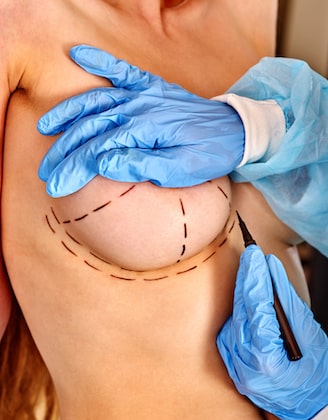
Once a patient has a mastectomy, they often want to find out how to reconstruct the breasts. A mastectomy is the partial or complete surgical removal of the breasts, and it is usually performed to treat breast cancer on the part of the patient. There might be a new way to provide patients with nipples that have a more natural appearance thanks to the development of a technique to treat patients who have undergone breast reconstruction surgery after a mastectomy procedure.
Investigators at Weill Cornell Medicine have announced the development of a technique that is intended to reconstruct nipples to have a natural appearance that is improved over previous techniques. In a study that was published in March in the Journal of Plastic and Reconstructive Surgery, Dr. Jason Spector, the Chief of the Division of Plastic and Reconstructive Surgery at Weill Cornell Medicine and New York-Presbyterian/Weill Cornell Medical Center, as well as a professor of surgery (plastic surgery) at Weill Cornell Medicine, along with his colleagues, reported on the development of a technique that can reconstruct nipples through the use of a 3D-printed scaffold that is made of a polymer already in wide use in surgical devices.
The Weill Cornell Medicine team also used a preclinical model to demonstrate that the combination of the healing process of the body and the dissolvable scaffold are able to create nipples that have a real and natural look and feel. In addition, the created nipple is able to maintain a level of projection that is long-lasting which has not been the case in previous types of breast reconstruction.
 According to Dr. Jason Spector, “We’ve developed a new approach to engineering nipples for breast reconstruction that we think will have a very positive impact on the lives of patients who’ve suffered through the effects of breast cancer and mastectomy.”
According to Dr. Jason Spector, “We’ve developed a new approach to engineering nipples for breast reconstruction that we think will have a very positive impact on the lives of patients who’ve suffered through the effects of breast cancer and mastectomy.”
The reconstruction of the nipple is one of the final, and most challenging, steps performed after a mastectomy. While there are some cases where the surgeon might be able to preserve the native nipple of the patient, most of these medical cases see the surgeon have to recreate the nipple from available skin tissue. At the moment, surgeons use a number of methods to reconstruct the nipple through the use of flaps of skin from the patient. However, the healing process might cause the flattening of the reconstructed nipple as time passes. The flattening can even reach the point where the nipple is completely flat after twelve to twenty-four months.
There have been instances where plastic surgeons have attempted to preserve the shape of the nipple by using fillers that are normally placed in the face. Since the results of fillers are not permanent, the effects of the fillers disappear over time as they are absorbed by the body. Plastic surgeons have also tried to use cartilage or other “still materials” but they do not provide a natural feel to the nipple. The desire to “create a better nipple” is one of the reasons Dr. Spector and his medical investigators team decided to try and provide patients with an improved surgical alternative.
Dr. Spector decided to partner with Tepha Inc., which is a company that created a polymer known as Poly-4-Hydroxybutyrate (P4HB). This polymer is already in wide use for the creation of both surgical meshes and additional medical devices.
The team, including lead author Dr. Xue Dong who is a postdoctoral associate in the lab of Dr. Spector, took the necessary steps to 3D-print the polymer into a scaffold that was able to recreate the shape and size of a nipple. While using an animal model, the team was able to show that the scaffold breaks down as time passes but the natural healing process of the body is able to refill the space with tissues that are vascular and fatty and typically in a nipple. The medical team also performed a series of biomechanical measurements in order to confirm that the nipple that was reconstructed had biomechanical characteristics that were comparable to an actual nipple.
Dr. Spector said, “The best tissue engineer is the body itself. If you create the right conditions and use the right scaffold in the right size, the body itself will engineer the tissue.”
The team, including lead author Dr. Xue Dong who is a postdoctoral associate in the lab of Dr. Spector, took the necessary steps to 3D-print the polymer into a scaffold that was able to recreate the shape and size of a nipple. While using an animal model, the team was able to show that the scaffold breaks down as time passes but the natural healing process of the body is able to refill the space with tissues that are vascular and fatty and typically in a nipple. The medical team also performed a series of biomechanical measurements in order to confirm that the nipple that was reconstructed had biomechanical characteristics that were comparable to an actual nipple.
It is also worth noting that the 3D-printed scaffolds could be created in a variety of shapes and sizes in order to meet the individual needs of a patient. Finally, Dr. Spector also feels that surgeons might decide to use the scaffold to reduce flattening that occurs after breast reconstruction where the nipple is spared by the surgeon.
- MA